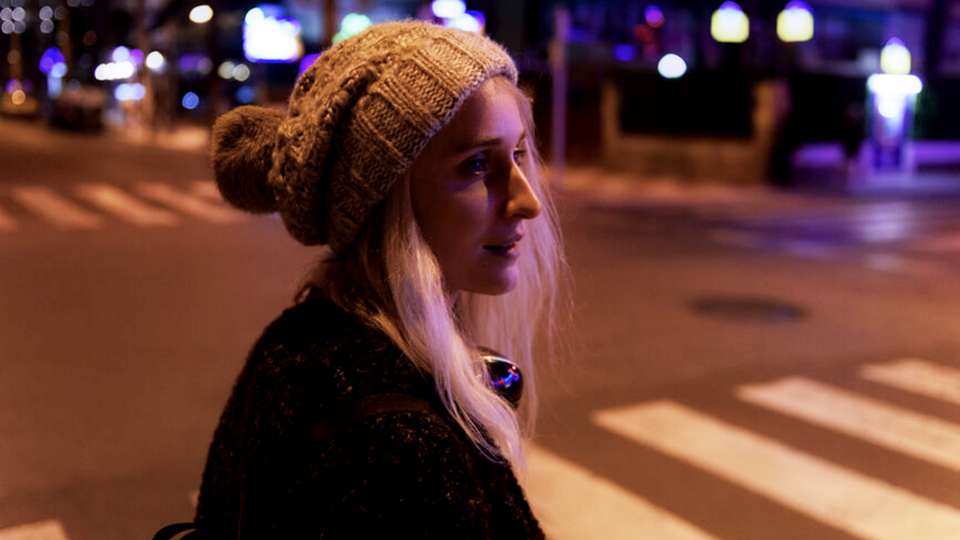
With our short daylight in December, it's inevitable to spend some time in the dark. And it's not just that it's dark. The dark we're dealing with during a Northwest winter comes with a cloud cloak that makes it easy to be invisible. We know how much this affects mood for some people, but what about something that affects all of us: personal safety?
Is darkness more dangerous?
When everyone is rushing between work and home and evening activities, the streets and sidewalks can be a chaotic place during a dark evening commute. It's also not a myth that there's more crime and accidents in the evening hours — most happens between 4 p.m. and 4 a.m.
Researchers like Steve Calandrillo, a professor at the University of Washington School of Law, are working to change this by advocating for daylight saving time (DST) to be extended year-round, keeping that extra hour of light in the evening instead.
“Simply put, darkness kills — and darkness in the evening is far deadlier than darkness in the morning,” says Calandrillo. “The evening rush hour is twice as fatal as the morning for various reasons: Far more people are out and about at 5 p.m. than at 7 a.m., more alcohol is in drivers’ bloodstreams, people are hurrying to get home and more children are enjoying outdoor, unsupervised play. Fatal vehicle-on-pedestrian crashes increase threefold when the sun goes down. Moving sunlight to the evening hours can save lives."
A dark evening commute is more dangerous for drivers, pedestrians, cyclists and transit users. If we could have one commute in sunshine, it would be safer for it to be the evening commute. Mornings are more predictable.
Calandrillo cites a Rutgers University meta-study, which found 343 fewer people would be killed in car-on-pedestrian and car-on-car accidents if we had year-round DST.
Helpful tips for these low-light times
Until year-round DST becomes a reality, here are some things you can do to stay safe in the dark.
When commuting or getting around town
Pedestrians: Be visible. Choose winter wear with light-colored, reflective fabric or add an inexpensive reflective patch to your jacket, bag or briefcase to help drivers and others see you. When crossing at intersections make sure drivers see you before stepping off the sidewalk and avoid crossing mid-block. Be predictable. Avoid using your phone in unlit areas where people could be hidden.
Transit users: In addition to the tips for pedestrians, try to wait at well-lit stops so drivers can see you, and use a transit notification light if there is one. If you get home late, King County Metro's Night Stop program allows you to ask a driver to drop you off at non-designated stops from 8 p.m. to 5 a.m.
Cyclists: Obey all laws for head and tail lights and wear reflective gear, too. The more you glow, the better. Stay on designated neighborhood bike routes if at all possible.
Drivers: Be aware the nighttime commute is the most dangerous for everyone in winter, and you are responsible for a heavy machine. Plan your route, go slow if it's raining and be aware of cyclists and pedestrians, especially children and school buses.
When getting exercise
Try to get up early and get your workout in during the morning or take a midday break. The least safe hours for all street users are in the evening when we're all rushing around.
If you have to exercise outside when it's dark, wear light-colored, reflective clothes and something that blinks, such as a headlamp. Be as seen as possible. Stick to well-lit streets and well-traveled routes.
Municipally owned tracks and outdoor athletic complexes sometimes turn the lights on after dark and can be a good option if you can't work out indoors.
When with kids and other family members
Be careful during school breaks and at holiday and winter activities. More kids are out and about when the light is low.
Remind everyone to be predictable pedestrians and be especially careful with small children in parking lots.
When going about your business
The UW Police Department offers safety tips that are good to follow all year.
First, avoid walking alone through isolated areas, such as shortcuts through parking lots and deserted parks.
It’s also important to be aware of what is going on around you. If you suspect you are being followed, indicate your suspicion by looking behind you. If you are on foot, cross the street, change directions and head to a well-lit area or a place with people as soon as possible.
When at home
The Seattle Police Department has a comprehensive list of burglary prevention tips to help prevent crime from hitting you close to home. Here are some reminders.
- Lock all doors, even when you're inside.
- Install high-quality doors with secure deadbolts.
- Install a peephole or a chain lock, so you can check to see who's on the other side before opening.
- Keep trees and shrubs near entrances and windows trimmed.
- Keep exterior lights on at all times.
- Use timers on interior lights if you are going to be gone.
- Know your neighbors and let them get to know you — consider joining or leading a police block watch program. Be aware of what's going on in your neighborhood.
Staying safe in the dark is about understanding the risks and taking charge to lower them for you and the people you love. You don't need to be afraid, but you do need to be aware and smart.

 Healthy ideas for your inbox
Healthy ideas for your inbox





